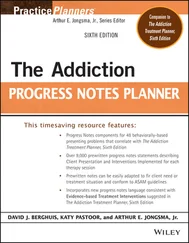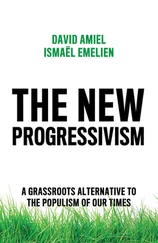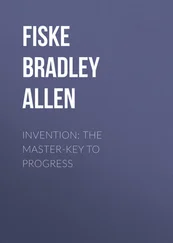17 Reconceptualize Anger (17)The client was assisted in reconceptualizing anger as involving different components that go through predictable phases.The client was taught about the different components of anger, including cognitive, physiological, affective, and behavioral components.The client was taught how to better discriminate between relaxation and tension.The client was taught about the predictable phases of anger, including demanding expectations that are not met, leading to increased arousal and anger, which leads to acting out.The client displayed a clear understanding of the ways to conceptualize anger and was provided with positive reinforcement.The client has struggled to understand the ways to conceptualize anger and was provided with remedial feedback in this area.
18 Process Anger Triggers (18)The client was assisted in processing the list of anger triggers and other relevant journal information.The client was assisted in understanding how cognitive, physiological, and effective factors interplay to produce anger.The client was reinforced for his/her/their insight into anger triggers and the cognitive, physiological, and effective factors.The client struggled to connect his/her/their anger triggers with cognitive, physiological, and effective factors and was provided with remedial information in this area.
19 Discuss Rationale for Treatment (19)The client was engaged in a discussion about the rationale for treatment.Emphasis was placed on how functioning can be improved through change in various dimensions of anger management.The concept of rationale for treatment and how functioning can be improved through change in the various dimensions of anger management was revisited.
20 Assign Reading Material (20)The client was assigned to read material that educates him/her/them about anger and its management.The client was directed to read Overcoming Situational and General Anger: Client Manual (Deffenbacher and McKay).The client was assigned to read Anger Management for Everyone (Kassinove and Tafrate).The client has read the assigned material on anger management and key concepts were reviewed.The client has not read the assigned material on anger management and was redirected to do so.
21 Teach Calming Techniques (21)The client was taught deep-muscle relaxation, rhythmic breathing, and positive imagery as ways to reduce muscle tension when feelings of anger are experienced.The client was assigned “Deep Breathing Exercise” in the Adult Psychotherapy Homework Planner (Jongsma).The client has implemented the relaxation techniques and reported decreased reactivity when experiencing anger; the benefits of these techniques were underscored.The client has not implemented the relaxation techniques and continues to feel quite stressed in the face of anger; he/she/they were encouraged to use the techniques.
22 Explore Self-Talk (22)The client's self-talk that mediates his/her/their angry feelings was explored.The client was assessed for self-talk, such as demanding expectations reflected in “should,” “must,” or “have to” statements.The client was assisted in identifying and challenging his/her/their biases and in generating alternative self-talk that correct for the biases.The client was taught about how to use correcting self-talk to facilitate a more flexible and temperate response to frustration.
23 Assign Self-Talk Homework (23)The client was assigned a homework exercise in which he/she/they identify angry self-talk and generate alternatives that help moderate angry reactions.The client was assigned “Journal and Replace Self-Defeating Thoughts” in the Adult Psychotherapy Homework Planner (Jongsma).The client's use of self-talk alternatives was reviewed within the session.The client was reinforced for his/her/their success in changing angry self-talk to more moderate alternatives.The client was provided with corrective feedback to help improve his/her/their use of alternative self-talk to moderate his/her/their angry reactions.
24 Role-Play Calming and Cognitive Coping (24)The client was assisted in visualizing anger-provoking scenes, then using relaxation and cognitive coping skills.The client engaged in role-plays regarding the use of relaxation and cognitive coping in anger-provoking scenes.The client was gradually moved from low to high anger-inducing scenes.The client was assigned to implement calming techniques in his/her/their daily life and when facing anger-triggering situations.The client's experience of using relaxation and cognitive coping in his/her/their daily life was processed, with reinforcement for success and problem solving for obstacles identified.
25 Assign Thought-Stopping Technique (25)The client was directed to implement a thought-stopping technique on a daily basis between sessions.The client was assigned “Making Use of the Thought-Stopping Technique” in the Adult Psychotherapy Homework Planner (Jongsma).The client's use of the thought-stopping technique was reviewed.The client was provided with positive feedback for his/her/their helpful use of the thought-stopping technique.The client was provided with corrective feedback to help improve his/her/their use of the thought-stopping technique.
26 Teach Assertive Communication (26)The client was taught about assertive communication through instruction, modeling, and role-playing.The client was assigned Your Perfect Right (Alberti and Emmons).The client was referred to an assertiveness training class.The client displayed increased assertiveness and was provided with positive feedback in this area.The client has not increased his/her/their level of assertiveness and was provided with additional feedback in this area.
27 Teach Problem-Solving Skills (27)The client was taught problem-solving skills.The client was taught about defining the problem clearly, brainstorming multiple solutions, listing the pros and cons of each solution, seeking input from others, selecting and implementing a plan of action, and evaluating and readjusting the outcome.The client was assigned “Problem-Solving: An Alternative to Impulsive Action” in the Adult Psychotherapy Homework Planner (Jongsma).The client displayed a clear understanding of the use of the problem-solving skills and displayed this through examples.The client struggled to understand the use of problem-solving skills and was provided with remedial feedback in this area.
28 Teach Conflict Resolution Skills (28)The client was taught conflict resolution skills through modeling, role-playing, and behavioral rehearsal.The client was taught about empathy and active listening.The client was taught about “I messages,” respectful communication, assertiveness without aggression, and compromise.The client was reinforced for his/her/their clear understanding of the conflict resolution skills.The client displayed a poor understanding of the conflict resolution skills and was provided with remedial feedback.
29 Conduct Conjoint Session for Skill Generalizations (29)The client was asked to invite his/her/their significant other for a conjoint session.The client and his/her/their significant other were seen together in order to help implement assertiveness, problem-solving, and conflict resolution skills.The client was assigned “Applying Problem-Solving to Interpersonal Conflict” in the Adult Psychotherapy Homework Planner (Jongsma).The client was reinforced for his/her/their increased use of assertiveness, problem-solving, and conflict resolution skills with his/her/their significant other.The client's significant other was urged to assist the client in his/her/their use of assertiveness, problem-solving, and conflict resolution skills.The client has not regularly used assertiveness, problem-solving, and conflict resolution skills with his/her/their significant other and was assisted in identifying barriers to this success.
30 Construct Strategy for Managing Anger (30)The client was assisted in constructing a client-tailored strategy for managing his/her/their anger.The client was encouraged to combine somatic, cognitive, communication, problem-solving, and conflict resolution skills relevant to his/her/their needs.The client was reinforced for his/her/their comprehensive anger management strategy.The client was redirected to develop a more comprehensive anger management strategy.
Читать дальше












